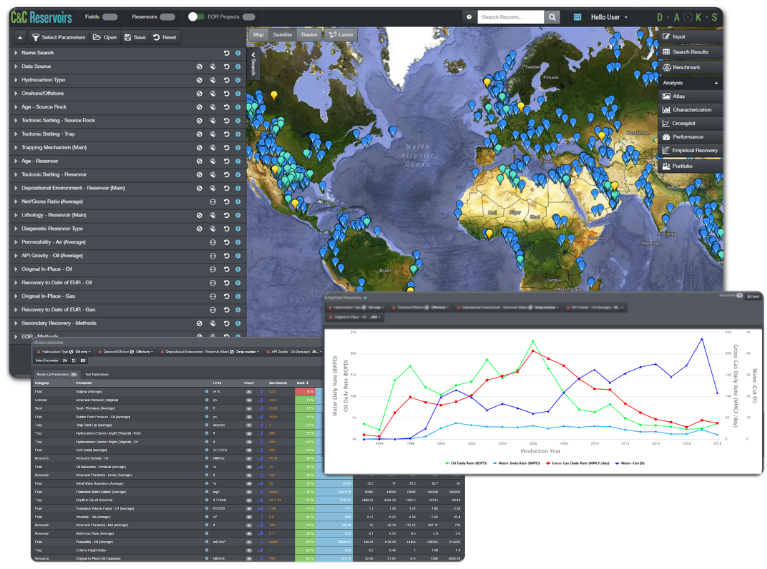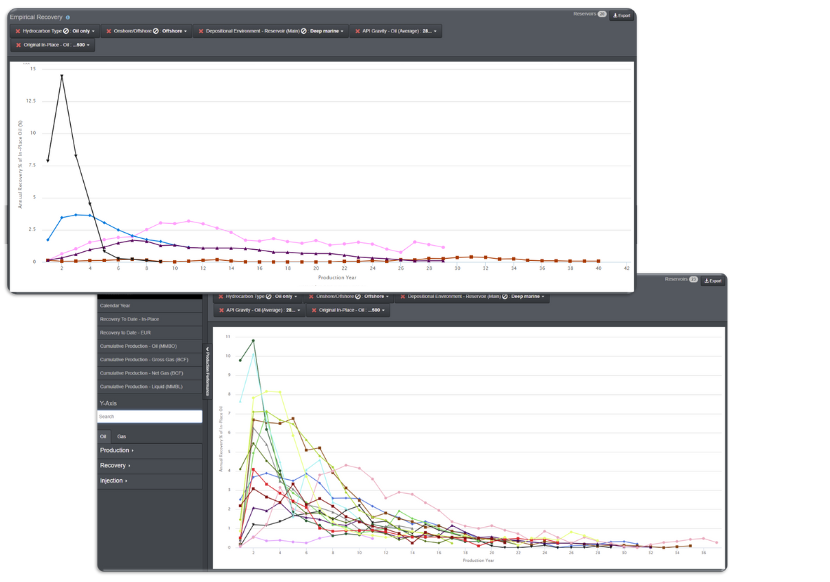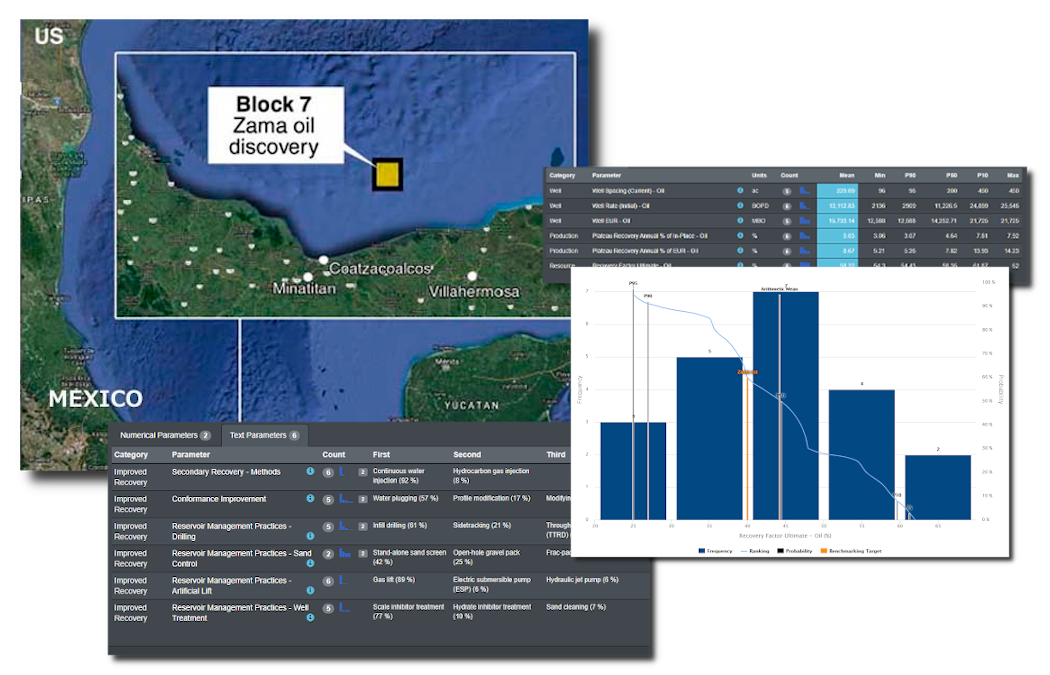Estimate recoverable reserves, forecast future production performance and optimize recovery methods

Validate your Development Concepts
Subsurface analogues provide an objective basis on which to test the viability of field development scenarios and characterize the permissible alternatives of a geologic model.
During appraisal and early field development, there are many uncertainties regarding the geologic model, number of wells needed to efficiently produce from a reservoir, well placement, pressure maintenance, recovery efficiency and potential reservoir management programs. Comparing new discoveries with analogous producing reservoirs helps better estimate recoverable reserves, forecast future production performance, and optimize recovery methods.
Evaluate Opportunities for Redevelopment
Understand the primary controls on recovery efficiency, test these against global best practices for recovery improvement and use this knowledge to guide redevelopment and optimization of existing assets.
When using analogues for assessing field development scenarios, detailed knowledge on reservoir geometry, dimension and connectivity, well type, spacing and rate, EUR/well, rock and fluid properties, drive mechanism, recovery methods and field size is required. Benchmarking undeveloped discoveries using these variables can identify best practices to help plan an optimal hydrocarbon recovery strategy and give greater confidence in estimating production rates and recovery factors.

Why DAKS™?

Using DAKS™ to Benchmark Recovery Potential
The Zama discovery in late Miocene submarine fan sandstone reservoirs, offshore Mexico, reported estimated recoverable reserves of 400 to 800 MMBO. The DAKS™ solution workflow has been used to benchmark the recoverable reserves against analogous producing reservoirs revealing significant upside potential. Discover how DAKS has also been used to plan an optimal hydrocarbon recovery strategy and give greater confidence in estimating production rates and recovery factors.
